One of the safest helmets money can buy: but that's not the only reason I loved the POC Cytal
POC has done away with the carbon, but the design principals and features of the Cytal remain the same

One of the safest road helmets available according to the test data, with great cooling and promised aero performance to boot. They’ve done away with the carbon, and it’s not cheap, but it’s very hard to fault this helmet.
-
+
The safest road helmet (according to VTH score)
-
+
Great cooling performance
-
+
Large range of colour options
-
+
Now with MIPS Air Node
-
-
Expensive
-
-
Poor airflow at low speeds
You can trust Cycling Weekly.

The aesthetics and construction of the new POC Cytal remain similar to the Carbon version I tested last year, but this time around, they’ve stripped out the black stuff and dropped the price. The main body of the helmet is made of an EPS expanded polystyrene with greater density in the upper portion and lower density in the lower to optimise crash protection and weight. A polycarbonate (PC) shell on top boosts protection further by aiding structural integrity.
There is still a ‘wing’ to direct airflow over the wearer’s head, but rather than carbon, this is now a mix of EPS and PC shell like the rest of the helmet. Its shape remains largely similar with differences due to the changes in structural integrity linked to the properties of carbon vs foam and plastic. The goal of directing airflow to improve ventilation and aero performance via a Venturi tunnel effect remains.
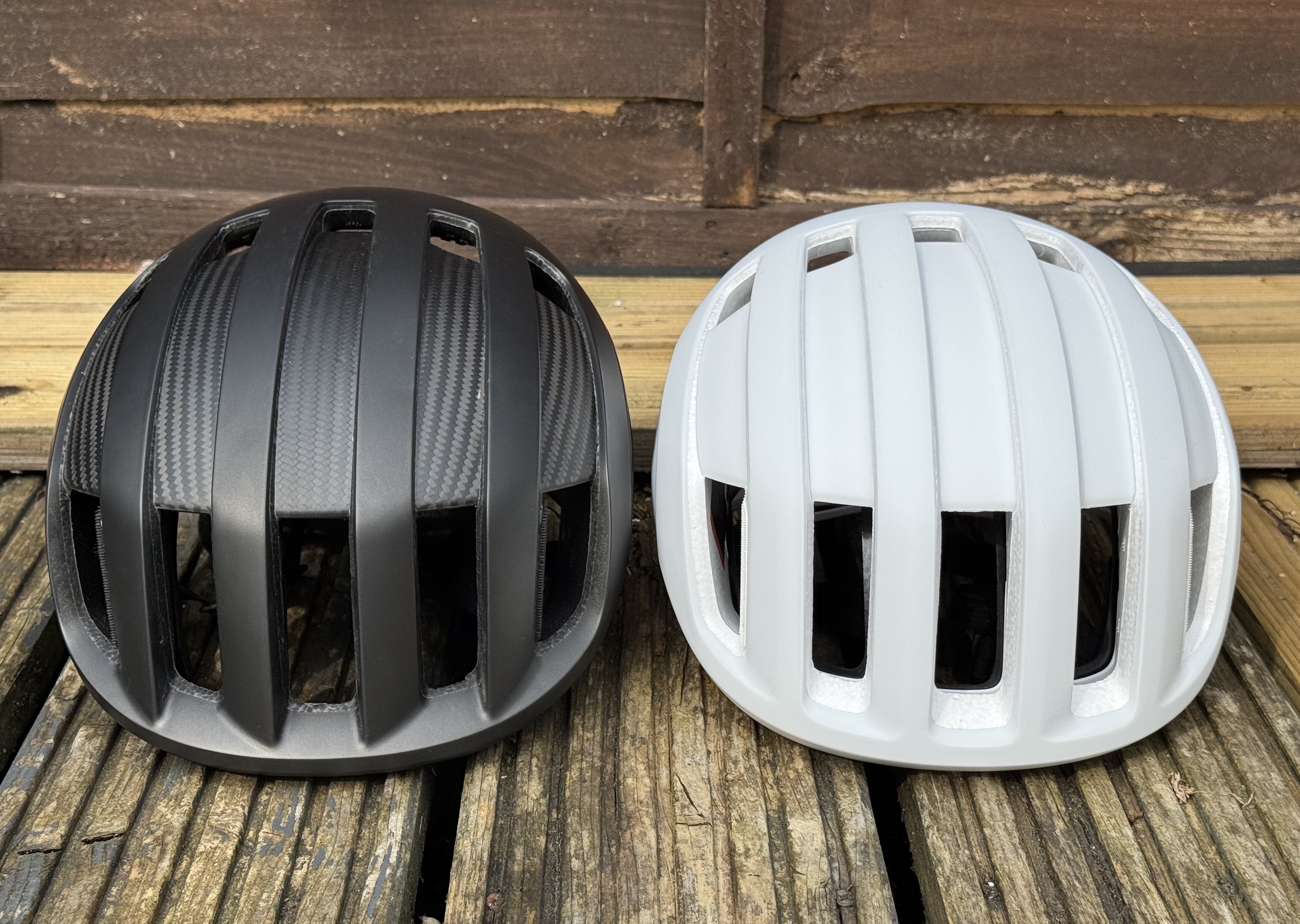
Carbon wing or no carbon wing. POC are now offering you the choice
The Cytal’s internals have also changed with a MIPS Air Node now included, helping the helmet to a 5-star safety score and third overall on the industry leading Virginia Tech helmet safety ranking. This MIPS lining is a low-friction addition underneath the padding that allows for ‘gliding’ in the event of a crash and greater dissipation of lateral forces that have been found to be linked to concussion.
The vents look almost identical to the Cytal Carbon, but there are subtle changes. Entry ports to the vents do not feature such an outward-facing angular design. It’s softer and halfway between the Cytal Carbon and the Ventral Air. The vents are still wide compared to some of the other best road helmets on the market, and of course run front to rear, with side vents to boost airflow.
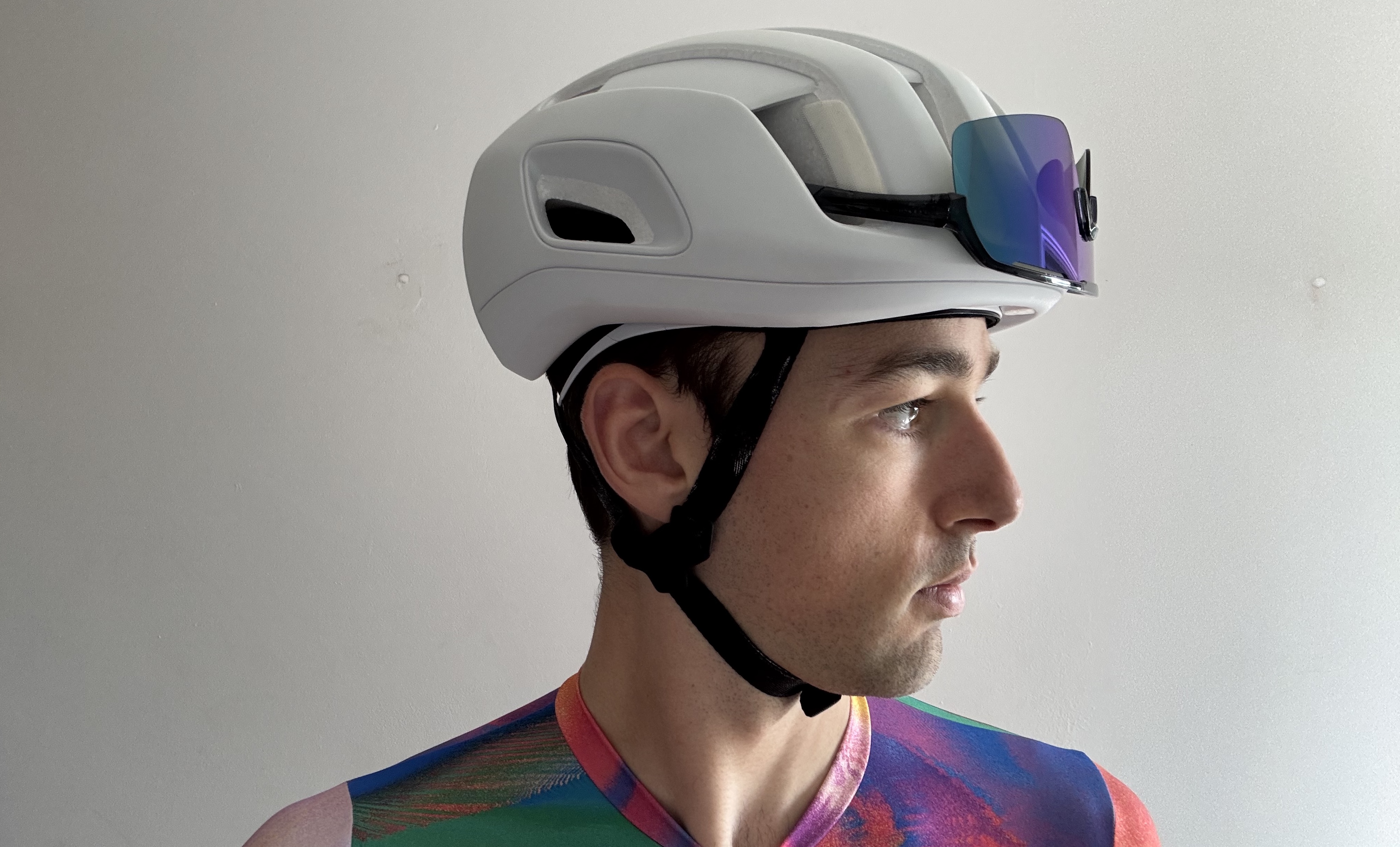
Pads keep your shades securely in place
The Cytal’s main feature is still the wing, shaped like a plane wing to create a low-pressure area under the wing and therefore speed airflow through the helmet. Padding is also largely unchanged, but a full brow pad is now the only option, rather than the two contact points on the brow of the Cytal Carbon.
High friction foam pads in the outer vents remain to hold your glasses should you want to take them off and stow them safely.
Fitting is also done via a similar means to the Cytal Carbon, with adjustable strap dividers, a no-flap chinstrap, and 360˚ fit adjustment with the same grippy dial. The retention system is subtly different, now using a plastic structure rather than high-strength fibres. Occipital adjustments are still possible as well.
The latest race content, interviews, features, reviews and expert buying guides, direct to your inbox!
The largest aesthetic change is the colours. Previously the Cytal Carbon came in black only. Nine colours of Cytal are available from more standard black or white options, to day glow orange and a matte red. Sizes are still small, medium, and large. Claimed weight is up to 270g, while price is down to £290.
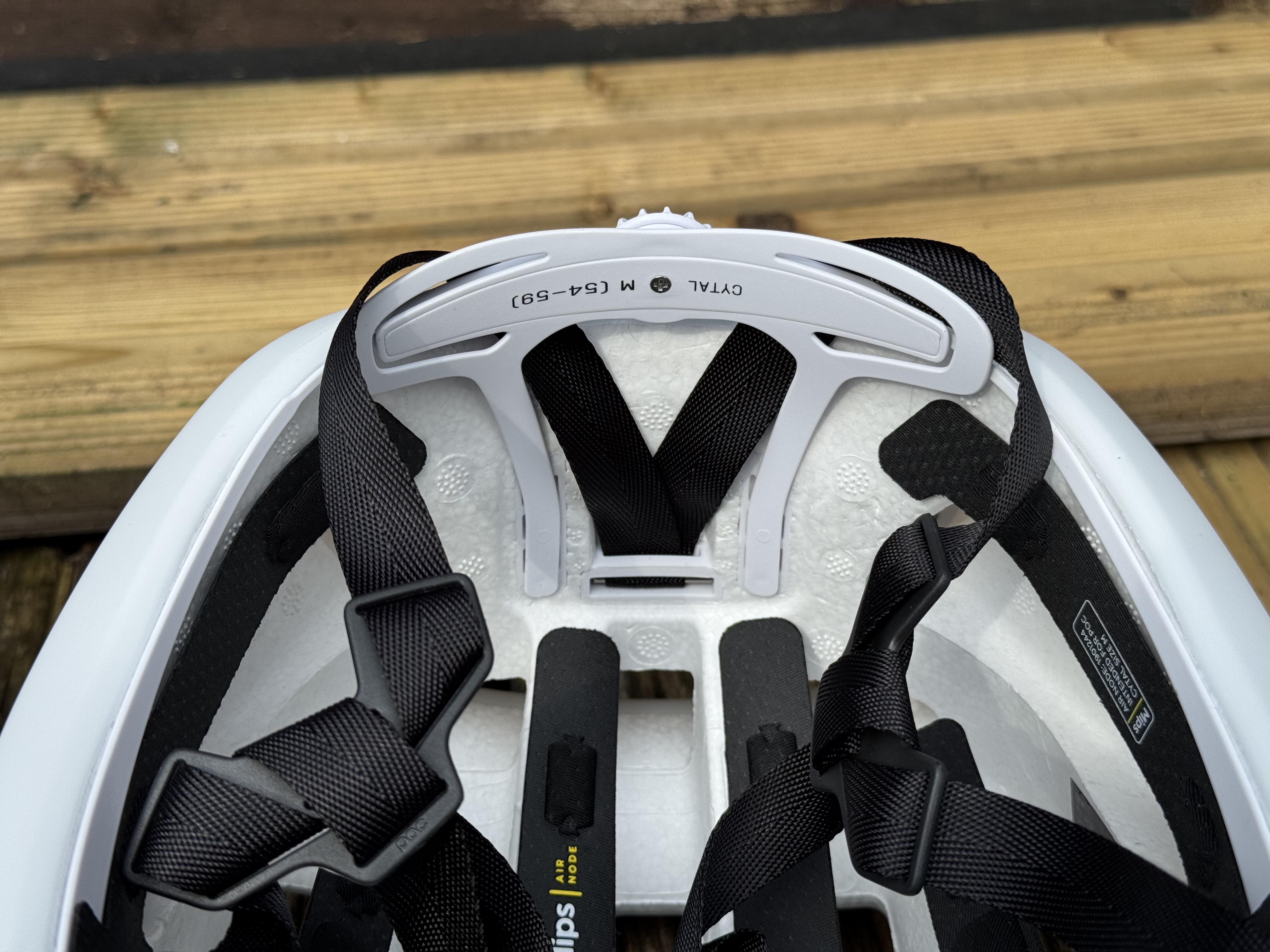
Retention system at the back of the head
Riding in the POC Cytal helmet
I really liked the Cytal Carbon helmet, and many of the features I liked remain with the new Cytal. It is incredibly comfortable with or without headwear underneath, as there is a good adjustability at the cradle and with the straps. I especially like the no-flap strap feature, as it enhances aero performance and also makes the helmet a neater overall package in my opinion. I would like it if the straps came in white for the sake of salt stains in the heat, but equally lighter materials can become grubby over time.
Where this helmet excels is the volume of air that passes through the helmet. Those large frontal vents and tall channels mean a huge amount of air passes over your head. At speeds of 25kph and up this makes the cooling superb, and one of the best that I’ve used. The placement of the rubber grips on the outer front vents also works superbly as a glasses storage port without getting in the way of airflow. I also still appreciate the open front brow to allow better cooling to that area, as that can get stuffy on some helmets.
However, where the new Cytal still falls behind is when climbing at lower speeds, where airflow is less prevalent but effort level increases. I found the airflow dropped significantly. Helmets like the Specialized Prevail 3, have an open top which allows excess heat to radiate out of the helmet. With a wing covering this area, the Cytal does not perform quite as well for low speed, high intensity riding. This is also an issue on gravel where average speeds are lower, and is the one flaw of this otherwise superb helmet.
It is worth remembering that this is a semi-aero helmet, or a semi-vented. I think it targets ventilation more than aero, but it is still designed to flourish at higher speeds. It’s also not much heavier than the Carbon version, but still weighs in the region of 100g heavier than the POC Ventral Lite.
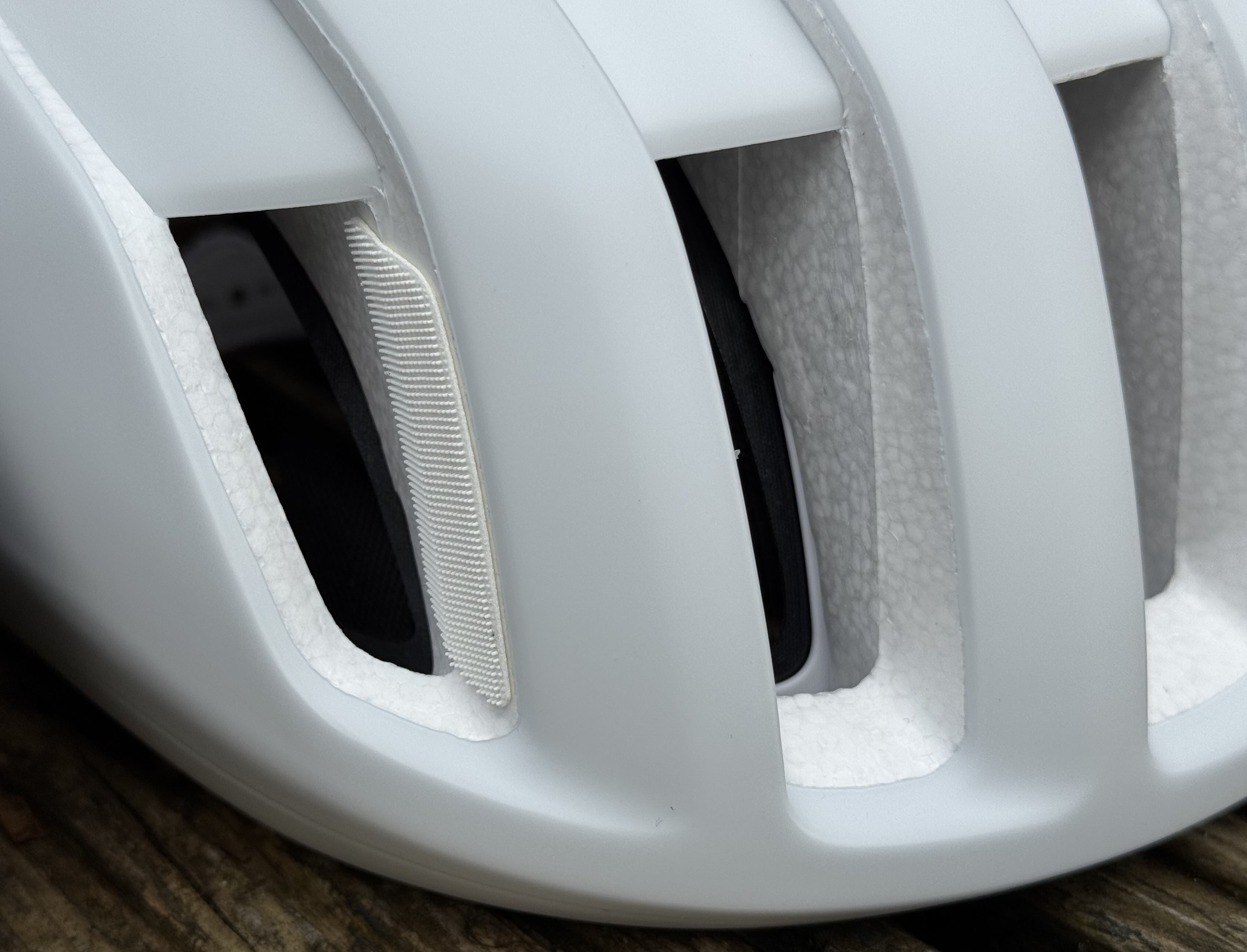
The wide and high vents channel airflow over the riders head, helped through by the wing above
This is perhaps why the likes of Richard Carapaz still use the outgoing model, especially on mountain stages where speed drops and effort increases, and weight savings become the be all and end all of most rider’s minds. In terms of aero performance itself, it’s hard to quantify, and qualitative data is not the most accurate.
The data behind the design principle of using the wind to increase airflow speed through the helmet via a century tunnel effect, eject it out the rear at a higher speed, and use those low pressure areas to speed up airflow around the outside of the helmet, are sound principles. However, without tunnel data it’s difficult to say. POC themselves state that this is more aero than the Ventral, but slower than the Procen Air which uses a similar principle but with smoother surfaces and fewer vents.
Another area where this helmet is better than the carbon version, is the colour. Black absorbs heat, so in direct sunlight it gets hotter. When doing long rides in high heat and sun, that will result in reduced cooling. On this striking white foam one, I found there was far less heat build-up in the sun. I used it for a hot, mountainous triathlon in the south of France, that involved lots of high intensity effort, and slow airflow climbing. The Cytal performed brilliantly and cooling was far better than the black Carbon version has been.
Another benefit to this colour option is safety. Having this, and a high-vis orange version make the helmet and its wearer more visible in most riding conditions. Add to that the highest VTH rating of any road helmet, and the Cytal is a helmet that gives you confidence that in the event of a crash, you are wearing the best option to protect your head. At the end of the day, safety is the most important aspect of a bike helmet, and the Cytal excels here.
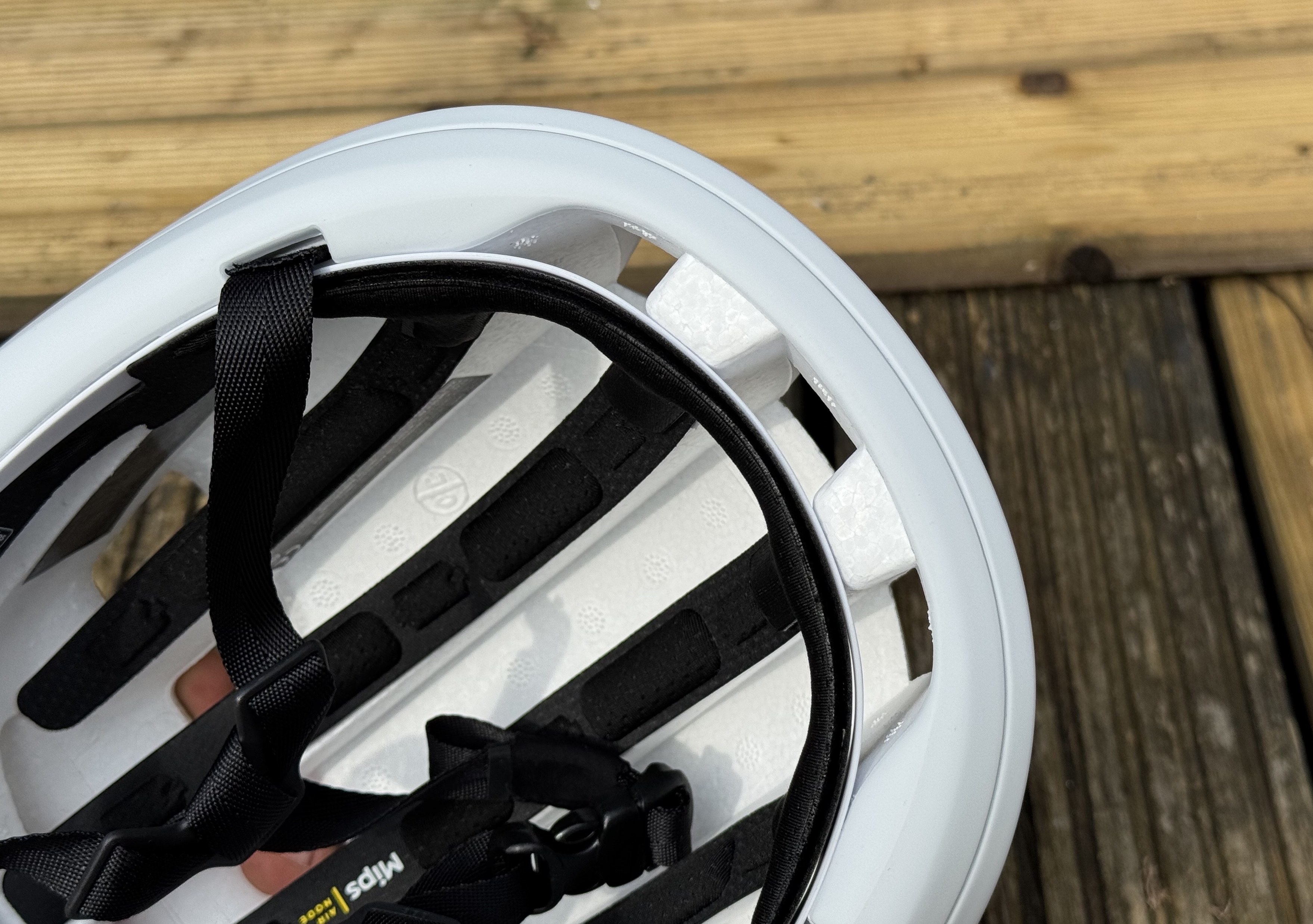
MIPS inside and adjustable straps make for a great fit
POC Cytal helmet - Value
The previous Cytal Carbon was an eye watering £370, making it one of the most expensive bike helmets available outside of dedicated time trial helmets. The price of the new Cytal has dropped to £290. With a similar weight, same performance, and more colour options, this makes the Cytal a no-brainer over the Cytal Carbon, unless you desperately want carbon in your bike helmet.
However, compared to some other great performing ventilated helmets, it is still on the more expensive side of things. The aforementioned Specialized S-Works Prevail 3 for example is £250 and a great helmet, better even for lower speed harder riding, while the Giro Aries is £289.99-£300 and has the best sweat management I’ve experienced in a helmet. Even the Ventral Lite is cheaper at £250 and a fair bit lighter, but forgoes many of the additional safety features.
One factor that can’t be ignored is it’s status as the safest road helmet on the market if going on the VTH rating. Add to that great cooling, subjectively great styling, and a helmet that is comfortable, practical, and functional, and that £290 is mostly justifiable in my mind. It’s not cheap, but it offers a helmet that is truly fantastic.
POC have taken a great helmet in the Cytal Carbon, and somehow made it even better while wiping £80 off the price. It’s still not cheap, but every great performance aspect remains, while almost every single flaw has been addressed, making this a brilliantly well rounded helmet. It’s not the best for high effort levels at lower speeds, but everywhere else it performs fantastically, while being one of the safest road helmets available.
Andy is a Sport & Exercise Scientist, fully qualified and experienced Cycling Coach, Sports Director, Freelance Writer, and Performance Consultant. He spent 3 years riding for a UCI cycling team and 7 years as a BC Elite rider, competing in prestigious events such as the Tour of Britain and the Volta a Portugal.
Graduating with a first-class honours degree in Sport & Exercise Sciences, he continues to pursue his interest in research in the field of Sport Science alongside managing his coaching business, ATP Performance. He also works as a Wind Tunnel operator and Performance Consultant at the Silverstone Sports Engineering Hub, working with individuals, teams, and businesses to optimise performance and develop products.
You must confirm your public display name before commenting
Please logout and then login again, you will then be prompted to enter your display name.
